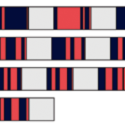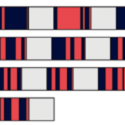Superfast laser cooling
The field of laser cooling of neutral atoms, ions, and now macroscopic optomechanical devices has been an extremely active area of research since the first demonstrations of cooling and trapping of alkali atoms over 20 years ago to the so-called Doppler limit, a mere few hundredths of a microkelvin. More sophisticated schemes broke the Doppler limit and now atoms and ions can be cooled to temperatures orders of magnitude colder.
In addition to the ultimate final achievable temperature, how fast one can make the cooling process is also of fundamental interest. The weak coupling between the atom’s or ion’s external degrees of freedom and the internal degrees of freedom implies that the trapping frequency must be significantly larger than Rabi frequency, which dictates the cooling rate. Now, Shai Machnes and collaborators from Israel, Germany, and the UK have proposed a method for laser cooling in the strong-coupling regime that allows for cooling rates that are not limited by the trapping frequency. As outlined in Physical Review Letters, the method utilizes a series of optimized coupling pulses on the sample to be cooled in the Lamb-Dicke regime. The cooling rate is limited now by the time required for atoms or ions to dissipate energy from the internal degrees of freedom, which can be orders of magnitude faster than the time scale set by the trapping frequency.
In addition to being applicable to a wide range of systems, including neutral atoms, trapped ions, and mechanical oscillators, the technique has the advantage of being naturally robust against experimental noise, such as laser intensity fluctuations and imperfections in timing routines. – Frank Narducci





